Whether it’s the excitement of a seasonal festivity, or the desire to explore eggs in general, egg coloring pages have an undeniable allure that sparks creativity. In this article, we embark on a journey to educationally explore the delightful world of eggs, discovering the pleasures they bring, the inspiration they offer, and the boundless possibilities they present for turning the ordinary into the extraordinary. So, let’s dip our brushes into the palette of creativity and immerse ourselves in the art of egg coloring!
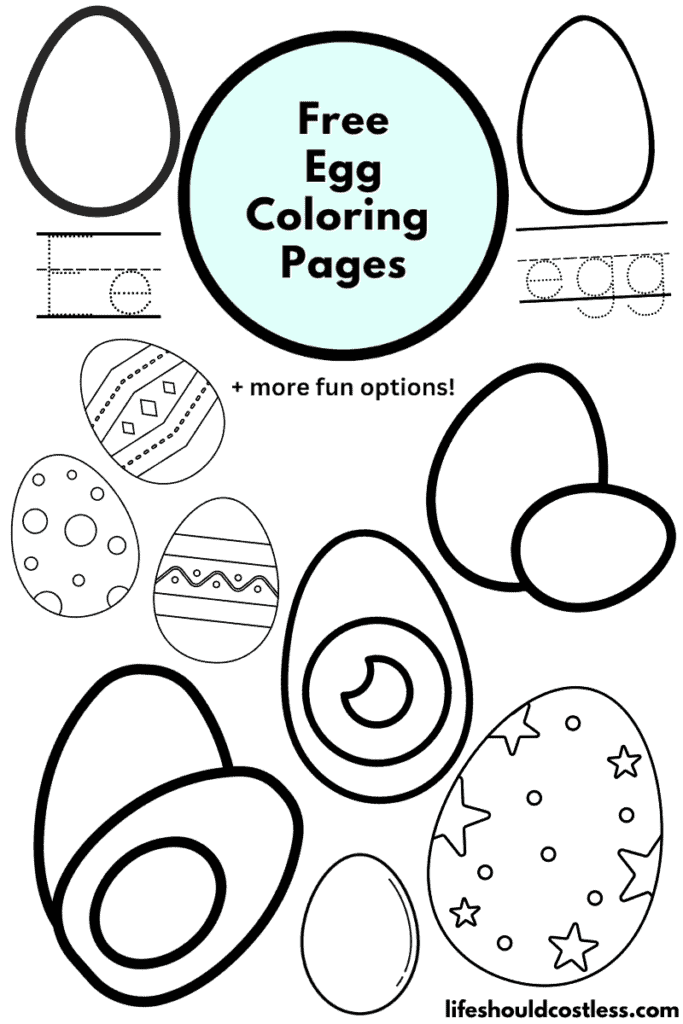
Feel free to choose any design you prefer, save the downloadable PDF template, and enjoy coloring to your heart’s delight.
Additionally, you could use these designs as embroidery patterns or draw inspiration for creating fine line tattoos.
Egg facts
For those who are new to my coloring pages, it’s important to note that I enjoy providing you with the opportunity to delve into the subject matter, transforming your coloring experience into an educational journey. With that in mind, let’s begin!
Here are lots of fun and interesting, simplified, facts about eggs (my reference source can be found here):
- Egg Formation: Eggs are produced by female animals of various species, including birds, reptiles, amphibians, and some mammals. In birds, the process of forming an egg begins in the ovary, where a yolk is released. The yolk then travels through the oviduct, where it is gradually covered with layers of albumen (egg white) and membranes before being enclosed in a protective shell.
- Diverse Shapes and Sizes: Eggs come in a fascinating array of shapes and sizes in the United States. Bird eggs, in particular, showcase a wide range of shapes from spherical to elongated, and sizes from tiny hummingbird eggs (around 0.4 inches) to the colossal ostrich eggs (up to 5.9 inches long and weighing about 3.1 pounds).
- Ostrich Eggs: Ostrich eggs are the largest laid by any living bird. In some cultures, these hefty eggs are used for decorative purposes and can also be hollowed out for use as water containers.
- Chicken Egg Colors: While chicken eggs are commonly associated with a white or brown hue, their colors can vary depending on the breed of the chicken. Some breeds produce eggs in shades of blue, green, or even speckled patterns.
- Strong Eggshell: Despite its delicate appearance, an eggshell is remarkably strong. It is composed mainly of calcium carbonate crystals arranged in a lattice structure, providing the necessary protection for the developing embryo inside.
- Cuticle Protection: The eggshell has a natural cuticle, a thin waxy layer that seals the pores, preventing bacteria and dust from entering the egg and reducing moisture loss.
- Double-Yolk Eggs: Occasionally, you might come across a double-yolk egg. This happens when two yolks are released too close together in the ovary, and both get enclosed in a single shell. Double-yolk eggs are more common in young hens whose reproductive systems are still adjusting.
- Eggs Without Shells: Some reptiles, like snakes and lizards, lay soft-shelled eggs that have a flexible, leathery texture instead of a hard shell.
- Egg Mimicry: Several insects have evolved to mimic eggs to protect themselves from predators. These insects lay their eggs close to the eggs of other species, fooling predators into thinking they are not viable prey.
- Egg-Laying Records: Among birds in the United States, the smallest egg is laid by the bee hummingbird (Mellisuga helenae) – it measures just over 0.4 inches in length and weighs approximately 0.02 ounces. On the other hand, the largest known egg belonged to an extinct elephant bird of Madagascar, measuring about 11.8 inches in length and holding the equivalent of 160 chicken eggs.
- Egg as a Symbol: Throughout history, eggs have been symbolic in various cultures, representing fertility, rebirth, and new beginnings. This significance is often tied to springtime celebrations and religious observances.
- Egg Boiling Science: When you boil an egg, the protein molecules in the egg white and yolk denature and recombine, transforming the liquid into a solid. The length of boiling time affects the egg’s consistency, ranging from soft-boiled to hard-boiled eggs.
- Egg Nutrition: Eggs are a highly nutritious food source, containing a wealth of essential nutrients such as protein, vitamins (B12, B6, D), minerals (iron, zinc), and antioxidants like lutein and zeaxanthin, beneficial for eye health.
- Egg Safety: Proper handling and cooking of eggs are essential to prevent foodborne illnesses caused by Salmonella bacteria, which can sometimes be present on the eggshell.
- Eggs in Culinary Traditions: Eggs play a central role in various culinary traditions worldwide, serving as primary ingredients in dishes such as omelets, quiches, custards, and desserts like cakes and cookies.
With these fascinating facts, you’ll find that eggs are not only versatile in their uses but also rich in cultural significance and natural wonders.
I hope you have enjoyed exploring the egg-citing world of eggs and their intriguing attributes!
If you would like to learn even more, here are some other reputable resources to learn about eggs while coloring:
- https://kids.britannica.com/students/article/egg/274131
- https://www.egginfo.co.uk/schools/all-about-eggs
- https://kidzeum.org/learning/educational-topics/lets-learn-about-eggs
- To see all of my free printables, go here.
- To see an alphabetized index of all of my coloring pages, go here.
- To see all of my Animals coloring pages, go here.
- To see all of my Birds coloring pages, go here.
- To see all of my spring coloring pages, go here.
Coloring tips
Here are my best tips and tricks to get the best results when you are working on your egg artwork:
- Select Quality Coloring Materials: Invest in good quality coloring materials such as colored pencils, markers, or watercolor paints. Quality tools will provide better color saturation and blending, resulting in a more satisfying finished product.
- Consider the Egg’s Texture: When coloring an egg, consider its texture and shine. Use light strokes for the egg’s highlights to mimic the reflective surface of a real egg.
- Layering and Blending: Build up colors gradually by layering them. Start with lighter shades and add darker colors on top to create depth and dimension. Experiment with blending colors to achieve smooth transitions and realistic effects.
- Color Inspiration: Take inspiration from real eggs or reference images to decide on the color palette. Bird eggs, in particular, come in a wide range of colors and patterns, allowing you to get creative with your choices.
- Experiment with Patterns: Eggs often have unique patterns and speckles. Play around with different patterns to make your colored eggs stand out. Use reference images or create your own imaginative designs.
- Add Highlights and Shadows: Pay attention to lighting when coloring. Add highlights on the egg’s surface where the light would hit it, and create shadows on the opposite side for a more realistic look.
- Try Different Coloring Styles: Experiment with different coloring techniques, such as stippling, cross-hatching, or blending with a blending stump. Each style can give your egg a distinct and appealing appearance.
- Practice Color Gradients: Eggs often have smooth color gradients. Practice blending colors smoothly to achieve this effect, creating a seamless transition between shades.
- Embrace Metallics: If using markers or paints, consider adding metallic colors to give your eggs a shiny, iridescent look.
- Protect Your Work: Use a sheet of paper under your hand to prevent smudging the colored areas. You can also spray a fixative or use a clear plastic sleeve to protect your finished artwork.
- Have Fun with Backgrounds: Consider adding a background to your egg picture to enhance the overall composition. A soft pastel background or a nature-inspired setting can complement your colored egg beautifully.
Remember, the most important tip is to enjoy the process and let your creativity flow.
Whether you’re coloring a simple egg or adding intricate patterns, have fun and explore the beauty of this timeless and versatile canvas. Happy coloring!
Options For Printing:
Letter E is for egg writing practice worksheets
*My letter E is for egg coloring sheet printables are specifically designed to be used in a classroom setting, they are the only printable options on this page that do not need written permission to use in a public setting.
Please send the link to this post along if anyone asks you where you got them. Thank you!
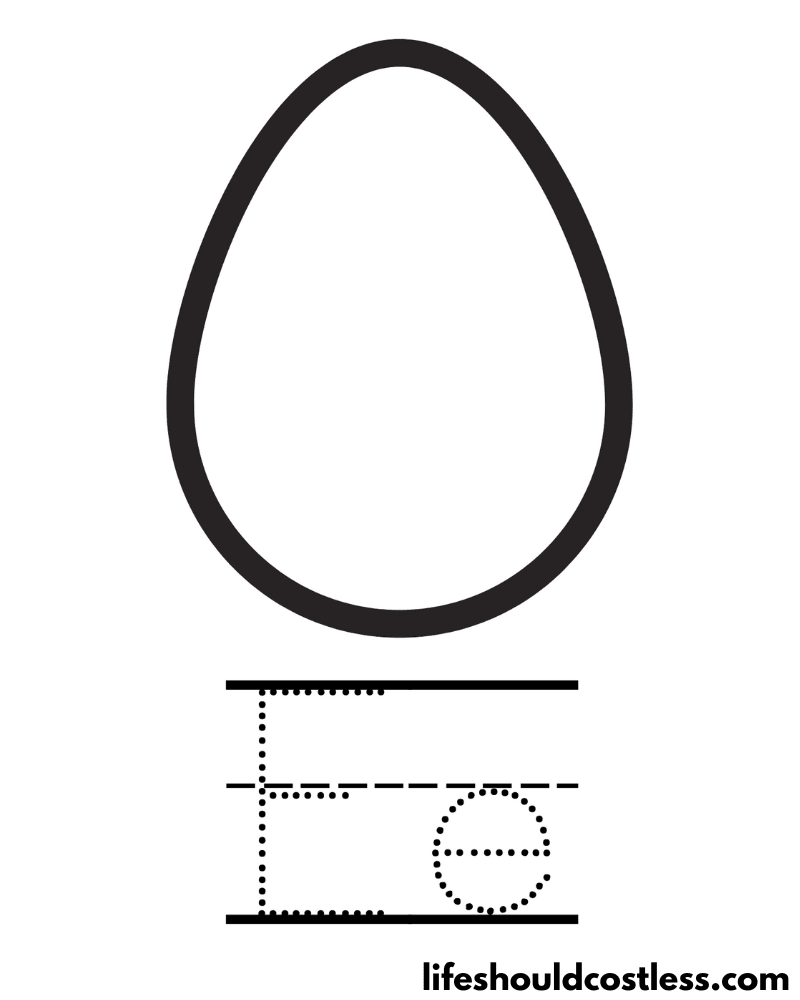
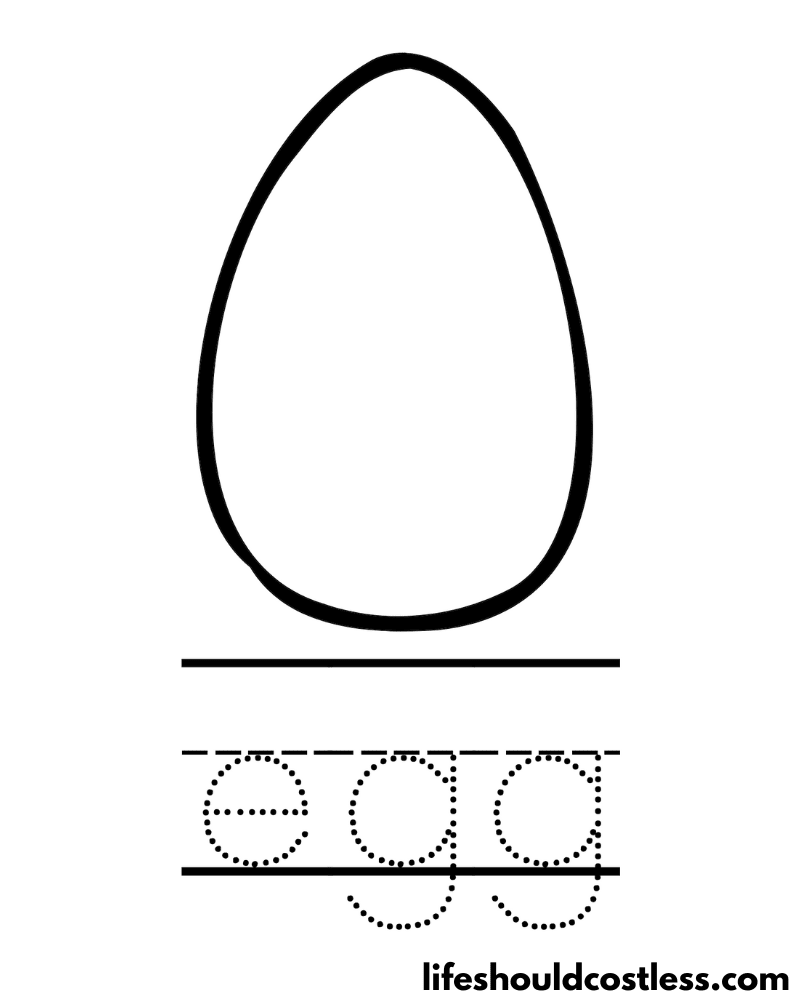
Simple Egg Designs
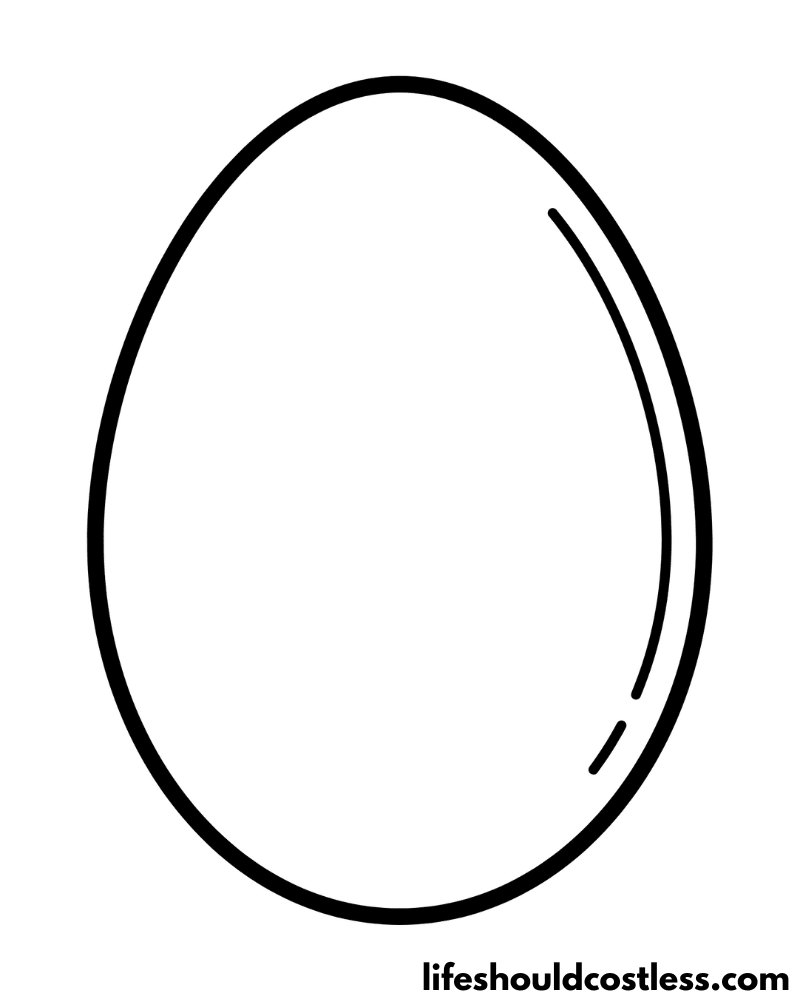
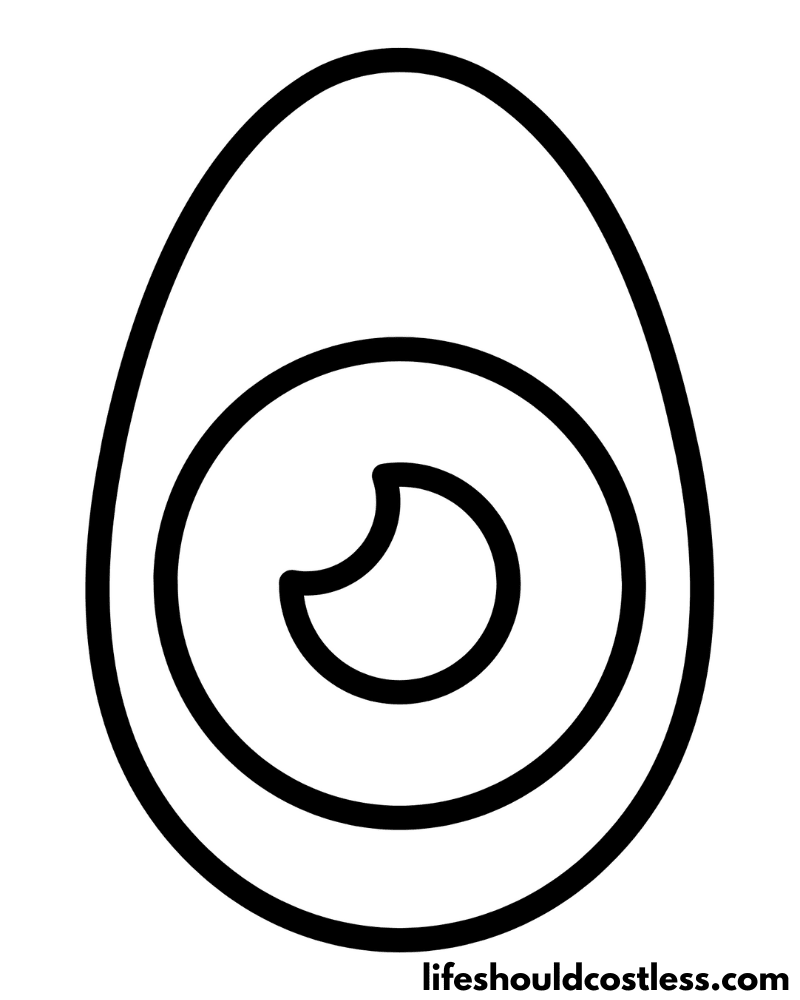
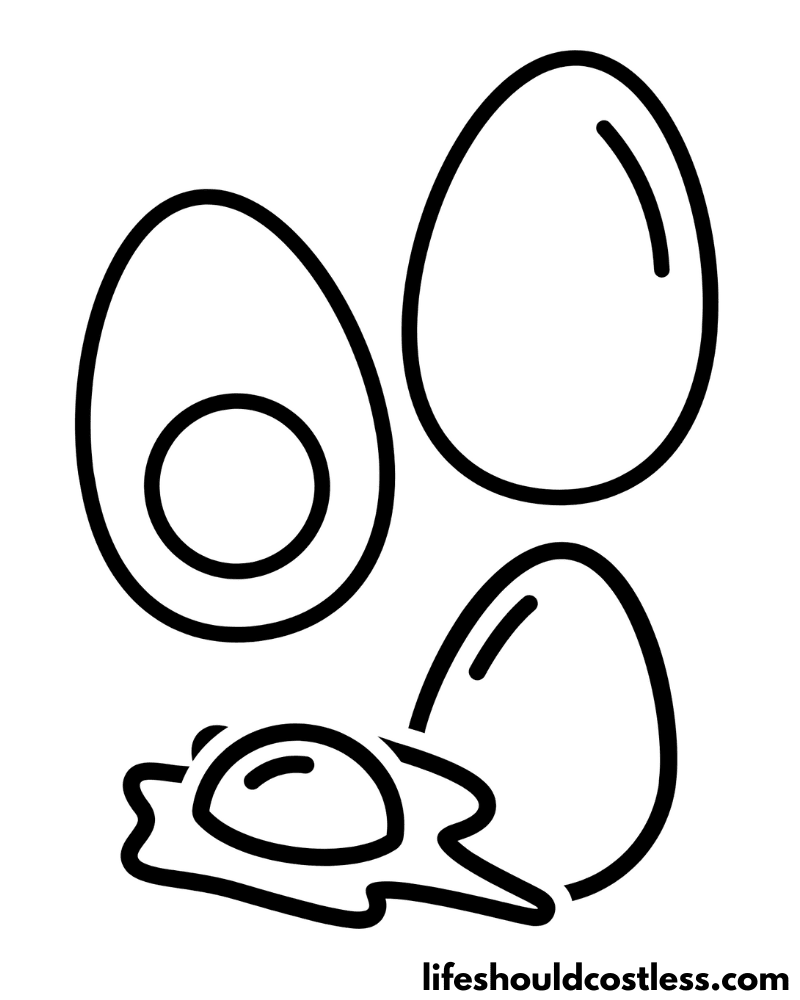
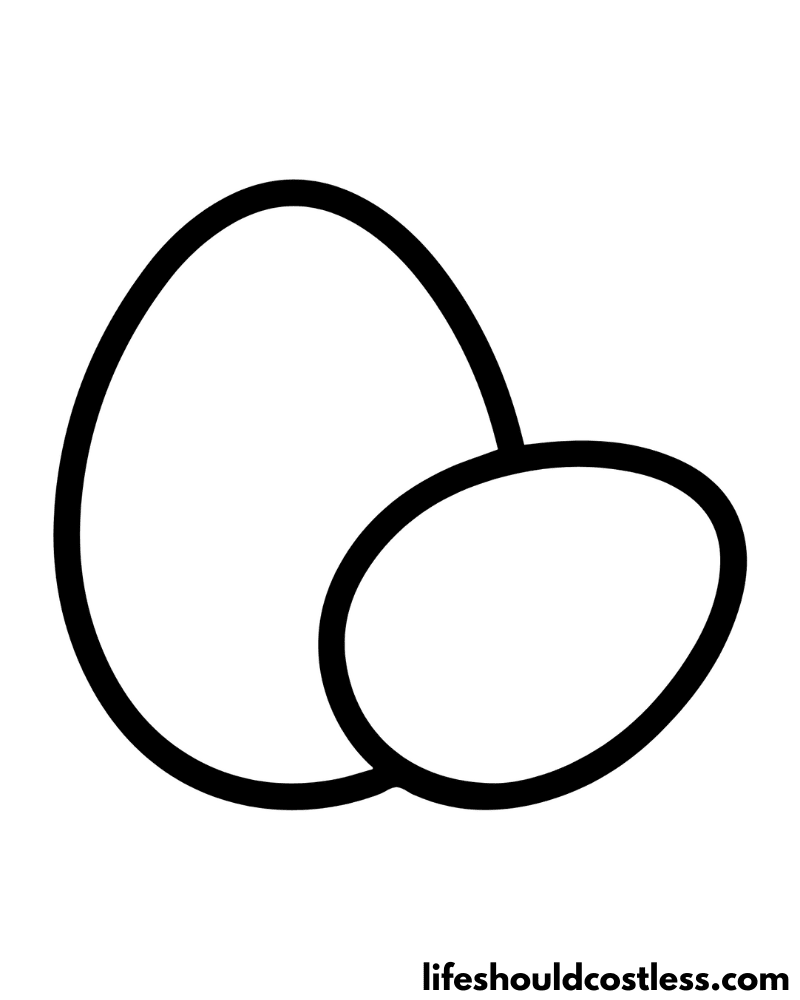
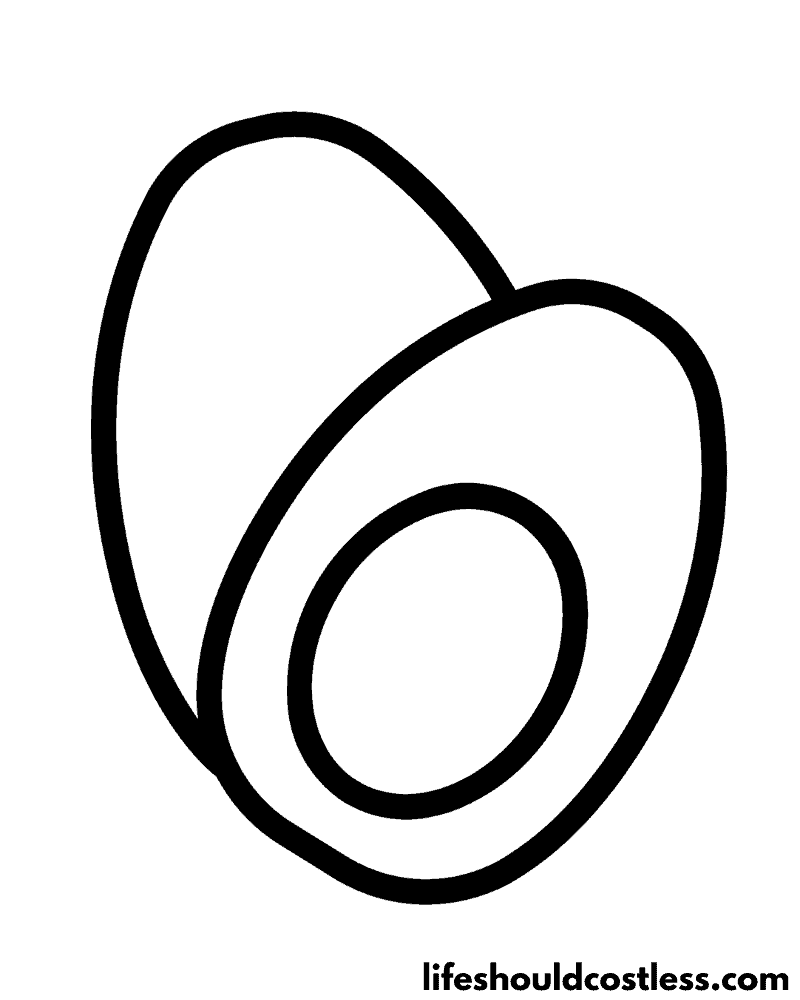
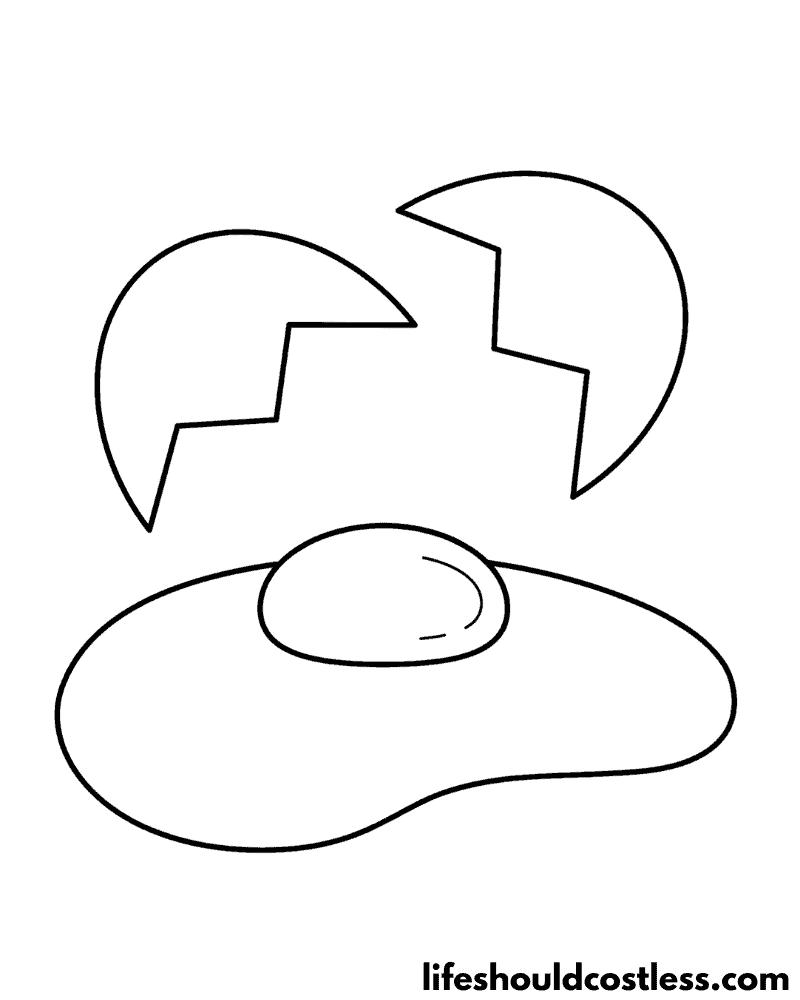
Easter Egg Designs

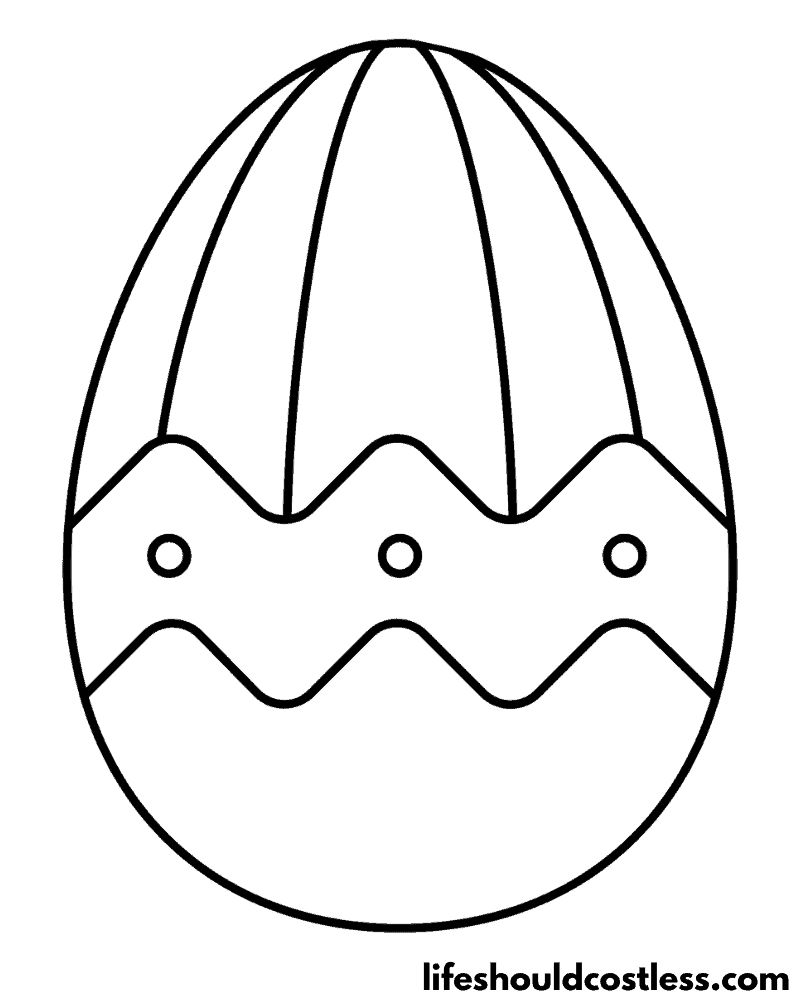
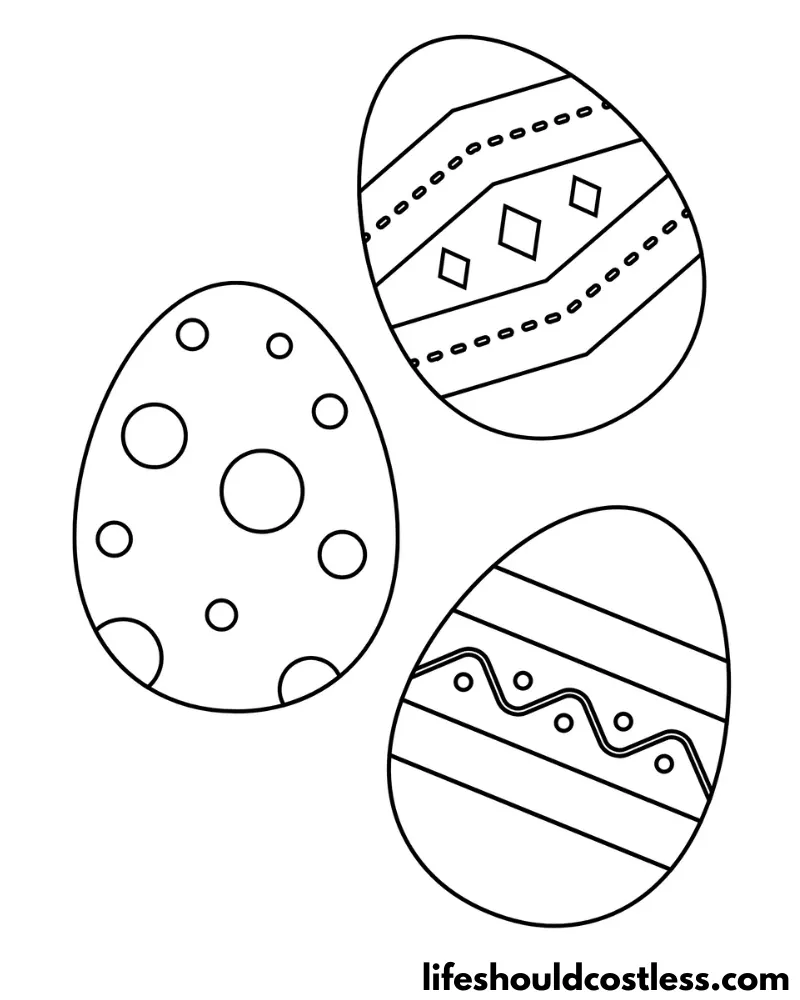
FAQ’s
The natural color of eggs can vary depending on the species of the bird laying them.
In the case of chicken eggs, the natural color is typically light brown or white. The breed of the chicken influences the eggshell color, with some breeds producing eggs that are cream or tinted shades as well.
Duck eggs, on the other hand, usually have a thicker shell and appear off-white to light blue or green. Certain breeds of ducks may lay eggs with unique colors, such as blue Muscovy duck eggs.
Other birds, like quails and pheasants, lay eggs that can be speckled or have different colors, such as light brown or olive.
It’s essential to note that eggshell color doesn’t affect the nutritional value or taste of the egg. The color of the eggshell is primarily determined by the genetics of the bird and doesn’t indicate any specific difference in the egg’s quality.
*I will add more egg colour / color questions and answers as the questions get sent to me.
In conclusion, egg coloring pages have proven to be a delightful and versatile canvas for artists of all ages to unleash their creativity.
From the enchanting world of eggs, with their diverse shapes, sizes, and captivating patterns, to the joy of exploring different coloring techniques, this timeless art form offers an array of artistic possibilities.
Beyond the joy of coloring, egg-themed designs have also opened the doors to unique educational experiences, allowing learners to delve into subjects while enjoying the creative process.
Additionally, these intricate designs have inspired various artistic pursuits, from embroidery patterns to fine line tattoos, making eggs an unexpected yet charming muse.
As we’ve discovered, egg coloring sheets are not only a source of amusement but also a reflection of cultural symbolism and natural wonders.
Whether you’re a seasoned artist seeking new inspiration or someone embarking on the exciting journey of coloring for the first time, these pages invite you to explore, experiment, and find your artistic voice.
So, let your imagination take flight and embrace the magic of coloring egg pictures.
Dive into the mesmerizing world of colors, patterns, and artistic expression, for within the humble egg-shaped canvas lies a boundless realm of creativity waiting to be discovered.
Whether you’re using pencils, markers, or brushes, the possibilities are endless. Happy coloring!
Thanks so much for stopping by my blog and supporting my endeavors to make people’s lives a little easier/better/more affordable.
If you liked this post, or found it helpful in any way, please make sure to share it with your family, friends, and co-workers via social media.
Or you could even send them the direct link via email. Whichever way you choose to spread the love, I super appreciate it! ~Sarah
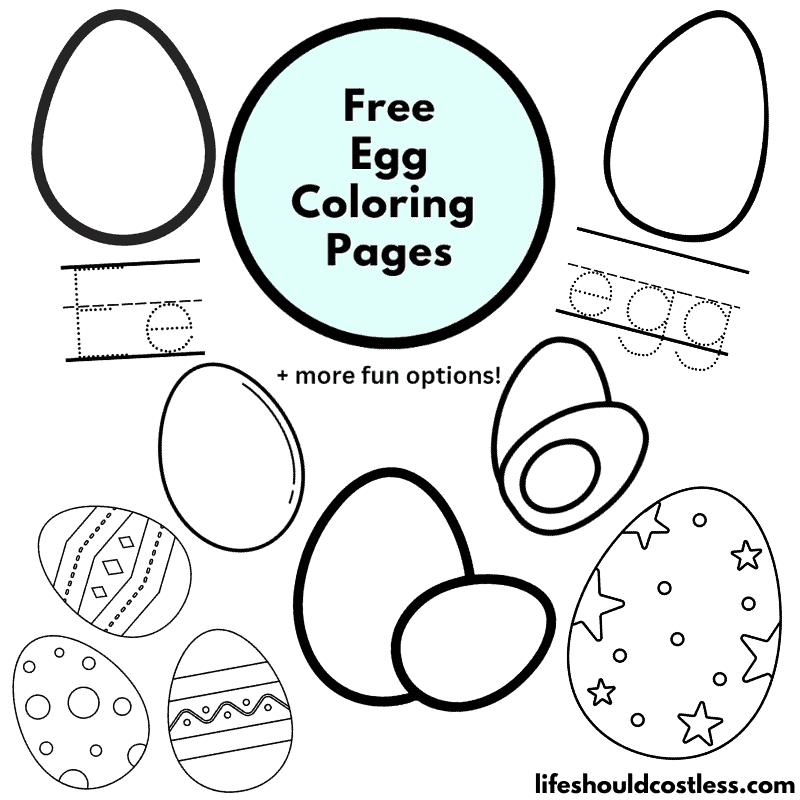
How To Follow & Support This Site
- If you would like to subscribe to my email list, go here.
- Make sure to follow along via social media, by going here.
- If you would like to learn how to really show your support to this site (at no cost to you), go here.
- If you would like to make a direct donation to the site, go here.
Check out my other free printables
- To see all of my free printables, go here.
- To see an alphabetized index of all of my coloring pages, go here.
- To see all of my Animals coloring pages, go here.
- To see all of my Birds coloring pages, go here.
- To see all of my spring coloring pages, go here.
Otherwise, here are direct links to several of my other bird posts that you’re also going to love:
Spring coloring pages
Easter
Animals / Birds
Animals / Mammals
Animals / Insects
Other good resources for a printable egg
- https://www.first-school.ws/theme/coloring-pages/eggs.htm
- https://twistynoodle.com/eggs-4-coloring-page/
*This post was originally shared to this blog on 07/30/2023, and has since been updated to improve user experience, add video instruction, as well as to make it as shareable as possible across the social medias.
**Please note that I do try my hardest to provide factual, but easy to understand, information about each topic. If you notice a discrepancy in my coloring pages, facts, or see something that you deem “misinformation/incorrect” please make sure to notify me about it. I would prefer that you send me an email with a link to a more reputable resource on that subject, so that I can correct it as soon as possible. Thanks so much for helping this site become the best that it can be!
***Resources from djinkers were used in the production of this article.
